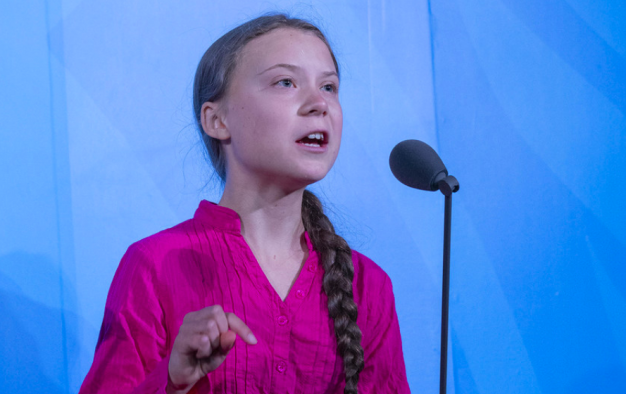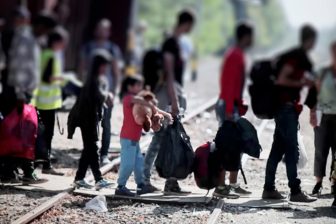
How children are taking European states to court over the climate crisis – and changing the law
Even before Greta Thunberg launched her school strike for climate at age 15, youth activists have been key players in public action on the climate crisis. Now they’re breaking new ground in court.
On November 30, six Portuguese children and young people brought a historic court case to the European Court of Human Rights (ECHR). Dubbed Duarte Agostinho and Others v. Portugal and Others – or the Agostinho case, for short – it argues that those states which fail to solve the climate crisis are breaching human rights.
In an exciting development last December, the ECHR agreed to fast track the case. The 33 European states – including the UK (which, post-Brexit, remains part of the ECHR system), France and Germany – now have to respond with information about how they will reduce the greenhouse gas emissions that are destabilising the climate, write Aoife Daly, University College Cork; Pernilla Leviner, Stockholm University, and Rebecca Thorburn Stern, Uppsala University
This case is part of a growing body of systemic climate litigation, which targets broad state policies. Much of it involves youth applicants for a number of reasons, including the fact that so many children and young people are climate-educated and tech-savvy. Unlike other cases, however, this particular application makes the key argument that states are engaging in youth discrimination.
Youth burden
The applicants to the ECHR – one of whom is as young as eight years old – have argued that, as well as violating their rights to life and to private life, governmental failure to tackle the climate crisis constitutes discrimination. They justify this claim by stating that “children and young adults are being made to bear the burden of climate change to a far greater extent than older generations.”
Portugal is reportedly a climate change hot spot, with increasingly deadly heatwaves. The young people involved in this case were witnesses to the 2017 fires in which over 120 people died. They point out how it is children and young people in particular who are affected in the long term as well as the short term. The heat precipitated by the climate crisis can make everyday life – from studying to exercise – very difficult. It makes them fearful for their futures too.
The next step in the case is for states to explain that, where their actions disproportionately affect young people, this is due to objective factors and not to discrimination. They must also outline how they are considering children’s best interests in their policies.
Possibilities for youth?
Most international human rights treaties have a provision protecting groups from discrimination. Agostinho appears to be the first time such a provision is being used to protect “youth” as a category in an international/regional court. Age discrimination provisions are generally understood as protecting older people.
“Youth” is generally taken to include those up to their mid-twenties, but the definition is not clear cut. Under-18s require particular attention as they are generally excluded altogether from discrimination law. This is likely due to a mistaken interpretation of the law, based on the blanket assumption that children cannot have the same rights as adults.
The UN Convention on the Rights of the Child outlines the rights to which under-18s are entitled, and it has certainly been successful in drawing attention to the rights and interests of children. But its non-discrimination article – which mirrors other human rights instruments – is also almost always applied to minorities, gender and disabled children. It is rarely used, if ever, to protect children (as opposed to adults) as a group from discrimination.
Unfair discrimination can include laws and practices that exclude groups. It can also include those that ignore the unique needs of a specific group. The latter is what is being argued in this case. The claimants’ position is that climate policies place most of the economic and environmental burden on the younger generation. Too little attention is being paid to figuring out how to share that burden and reduce carbon emissions right now.
This same argument has been used by petitioners in other ECHR cases – for example, where the Netherlands gave insufficient consideration to women’s rights in the context of pension policies. The argument has never been used at the ECHR for “youth” as a group, until now.
Youth discrimination
As experts on children’s rights and international law, our current research brings a legal element to a new discipline sometimes referred to as childism – like feminism, but for children.
This climate case is far from the only instance when youth have faced unfair discrimination. In some states (including the UK), there are dramatically lower minimum wages for under-18s (indeed under 25s) for the same work. It is also little known that in the UK children are more likely to be poor or to experience violence than adults.
At least one child per week dies in the UK at the hands of another person, and that figure is likely to be higher as there are difficulties with identifying the death of a young child as homicide. Yet as with many states, the Equality Act 2010 in the UK for the most part excludes under-18s from its protection.
Some social science and psychology academics have argued that bad attitudes to children are much of the cause of the hardships and rights violations they face. For example, beliefs that it is acceptable to hit children for punishment (still essentially legal in England for parents) are likely to be linked to relatively high homicide rates for children in the UK, as there is a clear link between excessive physical punishment and abuse.
By tackling discriminatory attitudes and policies, we can start to combat the actions that harm children. If the rights violations of under-18s were more frequently framed as equality issues (and litigated as such), it would mitigate the disadvantage under-18s as a group suffer due to disenfranchisement. It would likely prompt states to give greater consideration to children in policy-making. It would also increase perceptions of children in the public consciousness as human beings equal in worth to adults.
Whether or not the ECHR finds that states are discriminating against youth in the Agostinho case, the arguments these children and young people have made are groundbreaking. It should start a conversation about how and whether equality law can benefit children as a group.
Law is far from the only means to achieve progress for children’s interests, but it can be a crucial part of explaining what treatment is and is not acceptable. The potential for developing understandings of youth discrimination in the anticipated judgment shows just how exciting this legal development at the ECHR is.![]()
Aoife Daly, Lecturer in Law, University College Cork; Pernilla Leviner, , Stockholm University, and Rebecca Thorburn Stern, Professor of Public International Law, Uppsala University
This article is republished from The Conversation under a Creative Commons license. Read the original article.




